CAMP CHEF SMV24S-4 Outdoor Camping Smoke Vault Smoker

Keep this instruction manual for future reference.
|
DANGER |
If you smell gas:
|
| Failure to follow these instructions could result in fire, explosion or burn hazard, which could cause property damage personal injury or death. |
| DANGER |
|
| Failure to follow these instructions could result in fire, explosion or burn hazard, which could cause property damage personal injury or death. |
Hardware Bags
A:1/4-20 X 5/8″ Bolts (18)1/4-20 Nuts (18)
B: SMV-3Airvents (3)1/4-20 X 5/8″ Bolts (3)1/4-20 Nuts (3)
C: SMV-51Dial (1)Thermometer (1)#10 x 1/4 Bolts (2)
D: SMV-41Door Handle (1)Cam Latch (1)Wave Washer (1)1/2-13 Jam Nut (2)
E: SMV-40SMV Wire Handle (2)1/4-20 X 5/8″ Bolts (4)1/4-20 Nuts (4)
F: SMV-55Knob Bezel (1)M4 X 6 Screws (2)Valve Knob (1)

ASSEMBLY
Assemble Leg
- With the smoker cabinet in the upright position remove the door by lifting it from the hinges. Set the door panel aside. This will make assembly much easier. Remove knob from valve by pulling off.
- Set the smoker assembly upside down. Set the smoker cabinet on a padded surface such as cardboard or carpet to prevent scratching or damaging your smoker.
- Assemble 4 legs and the front panel as shown using 1/4-20 X 5/8″ bolts and 1/4 nuts.
Important: Assemble the front panel to the front legs before installing the inside bolts as this bolt must pass through the front panel and the leg.
Assemble Burner & Attach Regulator Hose
- Leave the smoker cabinet upside down.
- Assemble the burner drum assembly as shown to the smoker cabinet using 1/4- 20 X 5/8” bolts and 1/4 nuts.
- Attach the regulator hose to the brass fitting on the manifold as shown. Use a wrench to tighten the hose to the brass fitting.
- After installing the burner and regulator hose, check for leaks around the hose connection and manifold using a soap solution. See Page 8 – Checking for Leaks.
Assemble Knob Bezel
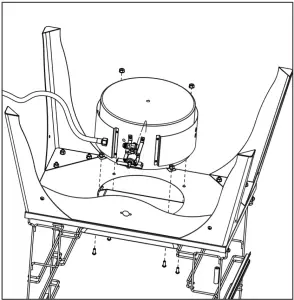
- Use two screws to attach the knob bezel to the faceplate. Note – Screws go through bezel and through the faceplate into valve. Faceplate may need to be adjusted to get holes to align properly.Make sure to center bezel on valve before tightening screws.
- Push the knob onto the valve stem as shown.

Attach Damper Vents
Stand the smoker upright on its legs.
- Assemble 1 damper vent on top of smoker as shown using the hardware provided.

- Tighten the nut enough to keep the damper vent snug but allow it to rotate with little resistance.
- Repeat steps 1 and 2 for the two remaining side damper vents.
Assemble Handles
- Assemble the carry handle as shown to the smoker cabinet using 1/4-20 X 5/8” C-sink bolts and 1/4-20 nuts.
- The nuts should be firmly tightened to the bolts.
- Repeat steps 1 and 2 for handles on both sides of the smoker cabinet.

Assemble Door
- Re-mount the door panel by sliding the door’s hinge pins into the cabinet’s hinge seats.
- Assemble the door handle as shown using the handle, wave washer, and two 1/2 jam nuts.

- Tighten the first 1/2 jam nut until the desired resistance of the handle is achieved.
- Tighten the second 1/2 jam nut on the first to keep the nuts from loosening.
- Install the dial with the thermometer installed as shown using two #10 X 1/4″ bolts.
Knob, Trays and Grids
- Set the grease pan in the bottom of the smoker as shown.
- Set the chip tray in the first rack position of the smoker.
- Set water tray in the second position of the smoker.
- Insert the cooking grids into any of the remaining positions as desired.

Knob, Trays and Grids
- When Inserting the smoking racks, make sure that the longest bar is on the top as shown at right.

WARNINGDO NOT use this smoker in a manner other than its intended purpose. Not intended for commercial use. Not intended to be installed or used in or on a recreational vehicle or boat.When cooking with oil/grease, a fire extinguisher must be readily accessible. In the event of an oil/grease fire do not attempt to extinguish with water. Use Type BC dry chemical fire extinguisher or smother fire with dirt, sand of baking soda. In the event of rain while cooking with oil/grease, cover the cooking vessel immediately and turn off the appliance burners and gas supply. Do not attempt to move the appliance or cooking vessel. The use of alcohol, prescription or non-prescription drugs may impair the consumer’s ability to properly assemble or safely operate this appliance.
FOR OUTDOOR USE ONLY!Do not operate the smoker indoors, in a garage, or in any other enclosed area or under overhead construction. Do not use on or under any apartment, condominium, balcony or deck. Do not operate smoker near flammable materials such as decks, fences, porches or carports. A minimum clearance range of 36 inches is recommended.Do not store the smoker near gasoline or other combustible liquids or where combustible vapors may be present.
Use caution when assembling and operating smoker to avoid cuts and scrapes from rough or sharp edges.
Use caution when lifting or moving the smoker to avoid strains or back injury. 2 people are recommended to lift or move the smoker. Do not move the smoker while it is in use. Allow the smoker to cool to 115°F (45°C) before moving or storing.
When cooking, the appliance must be on a level, stable surface in an area clear of combustible material. An asphalt surface (blacktop) may not be acceptable for this purpose. Do not operate smoker on flammable material such as carpet or a wood deck. NEVER use gasoline or highly volatile fluids as a starter.
Store the smoker in a dry, protected location.This appliance is not intended for and should never be used as a heater.
DO NOT leave smoker unattended while in use. Operate the smoker with close supervision. Do not leave hot ashes unattended until the smoker cools completely.
DO NOT operate around children or animals. Do not conduct activities around smoker during or following use until cooled. Do not bump or tip smoker. If Smoker becomes extremely hot allow smoker to cool completely before handling. If you must handle the smoker while it is hot, always wear protective oven mitts or heat resistant gloves when handling the smoker or its components.
The water tray and wood chip box should not be moved while smoker is operating or until smoker has cooled sufficiently. These contain hot ashes and liquids that may cause serious injury. If you must move these components, ALWAYS wear protective oven mitts or heat resistant gloves.
Dispose of cold ashes by wrapping them in heavy duty aluminum foil and placing in a non-combustible container. Be sure there are no other combustible materials in or near the container.
DO NOT obstruct flow of combustion air and/or ventilation air for smoker.
Use caution when opening the door of smoker while in operation. Keep hands, face, and body safe from hot steam or flare-ups. Protect your nose and mouth from smoke inhalation. Do not wear loose clothing while operating the smoker. Tie back long hair while operating the smoker. ALWAYS wear fully-covering shoes while operating the smoker.
Allow smoker and its components to cool completely before conducting any routine cleaning or maintenance. Do not move the appliance when in use.
Never use glassware, plastic or ceramic cookware on or in smoker. NEVER operate smoker without water in the water tray. NEVER allow the water to completely evaporate. Check the water level at least every 2 hours. A sizzling sound may indicate a low water level. Follow instructions in this manual for adding water while operating.
When using flavoring wood, add a sufficient amount prior to operation to avoid having to add wood while operating. Adding wood while operating may splash hot water and cause serious injury.
Use of accessories not intended for smoker is not recommended and may lead to injury or property damage.
An LP cylinder not connected for use should not be stored in the vicinity of smoker or any other appliance. Do not store spare LP cylinders within 10 feet of smoker. LP cylinders must be stored outdoors, out of reach of children.
Do not store a spare LP-gas cylinder under or near this appliance. Never fill the cylinder beyond 80 percent full. Failure to follow these instructions exactly could result in a fire causing death or serious injury.
The smoker should be shut off and all supply valves (on piping or on fuel cylinders) should be closed in the event that the odor of unburned gas is detected. Do not attempt to use the unit until any gas leaks are fixed.
Do not use the smoker if the burner fails to light or fails to remain lit. Under such conditions, gas should be shut off and fuel cylinders should be disconnected. Do not operate under high wind conditions.
LP tanks are intended for operation in the upright position only.Care should be taken to protect the fuel supply hose from damage from either foot or vehicle traffic.
If the appliance is not in use, the gas must be turned off at the supply cylinder and the cylinder should be disconnected from the appliance.
Storage of the appliance indoors is only permissible if the cylinder is disconnected and removed from the appliance.
All installations are to conform to local codes. In the absence of local codes, installation should conform to the National Fuel Gas Code, ANSI Z223.1/ NFPA 54
Smoker should be installed with the hose regulator assembly extended at full length of hose directly away from the burner. Keep fuel supply hose away from any heated surfaces. When so configured, placement results in maximum tank to smoker distance. When smoker is operated, the hose/regulator and gas tank should be on a line perpendicular to wind direction. Placing tank closer than 24″ to the smoker can overheat the tank and cause release of propane through relief openings and can result in tank fire or explosion.
Connecting the LP Tank
- The knob on the LP tank must be closed. See that the knob is turned clockwise to a full stop.
- Check that the control knob on the smoker is turned off.
- Remove the protective cap from the LP tank valve and coupling nut, if present.

- Hold the regulator in one hand and insert the nipple into the valve outlet. Be sure the nipple is centered in the valve outlet. The coupler connects to the large outside threads on the valve outlet.
- Hand tighten the coupler clockwise until it comes to a full stop. Firmly tighten by hand only.
- Place the tank to the side or rear of the smoker. Make sure the hose does not touch any part of the burner drum housing.
CAUTION: In the connection process, the HVR side of the connection will seal on the back check in the valve, resulting in a slight resistance. The connection requires about one-half to three-quarters additional turn to complete connection.
Any fuel supply cylinder used must be constructed and marked in accordance with specifications for propane cylinders of the U.S.Department of Transportation (DOT) CFR 49 or CAN/CSA B339. The appliance is to be used only with the 20 pound, vertical standing vapor withdrawal type tank.
This smoker is designed to operate on LP (Liquefied Propane) gas only.
The 20 lb LP cylinder used with this smoker must conform to the following requirements:
- Type 1 Connections
- Diameter – 12″ (30.5cm)
- Height – 18″ (45.7cm)
- Maximum capacity of 20 pounds
- The gas cylinder used must include a collar to protect the cylinder valve.
The cylinder supply system must be arranged for vapor withdrawal. Follow the instructions stated on gas cylinder tanks when filling or transporting tanks. Failure to do so could result in problems relating to overfilling, excessive venting release of gas and to regulator freezing. Never fill the cylinder more than 80 percent full.
Do not allow dirt or foreign material to get into or onto tank connection when it is not attached to the fuel supply system. Use the protective cap provided.
Place dust cap on cylinder valve outlet whenever the cylinder is not in use. Only install the type of dust cap on the cylinder valve outlet that is provided with the cylinder valve. Other tpes of caps or plugs may result in leakage of propane.
Cylinders must be filled before initial use. All handling, transport, filling and storage of LP gas cylinders must be in accordance with NFPA 58 Storage and Handling of Liquid Petroleum Gasses, or CAN/ CSA b149.2 Propane Installation Code. Cylinders must be suitably tied down during transport. Do not place any other items on top of cylinders at any time.
Cylinders are not to be exposed to excessive temperatures or high heat. Refer to the data plate for model identification. Units are factory equipped for use on only one type of fuel. These units cannot be, and should not be used on other types of fuels. Doing so can cause severe damage to the unit and the installation area and the added risk of serious injury. Any attempt to operate this product on fuels for which it is not designed voids the manufacturer’s warranty.
This unit is not to be utilized with a nonself-contained LP-gas supply system.
The pressure regulator and hose assembly supplied by the manufacturer with the appliance must be used. Replacement pressure regulators and hose assemblies must be those specified by the appliance manufacturer. See rating sticker on side of appliance for regulator model number.
The regulator/hose assembly should be handled carefully to prevent contamination by foreign objects and dirt. The assembly should be inspected before use and any dirt or contamination should be wiped off. In order to insure proper operation, any replacement of the regulator assembly must be with parts authorized by manufacturer. Valve/pressure regulators are factory set to the correct operating pressures. No attempts should be made to adjust these settings.
Checking for Leaks
After all connections are completed, check all connections and fittings for leaks with a soap solution.
-With all valves closed, apply the leak check solution (50/50 mix of dish washing soap detergent and water) to all gas carrying connections and fittings.
-Open tank valve.Presence of bubbles at areas of wet solution indicates a gas leak. If leaks are detected or you smell or hear gas, shut off the valve and repair the leak or replace the defective part. Do not use the smoker until all leaks are corrected.
OPERATING INSTRUCTIONS
Pre-Use Procedures
Before you cook food in your smoker, it is important to “season” your smoker. Seasoning seals the paint and interior of your smoker to enhance flavoring, durability and overall performance. This is also referred to as the “break-in” process. If your smoker requires any touch-up paint on the inside of the cabinet, the only time you should apply paint to the inside is before the seasoning process. Paint should not be applied to the interior of your smoker after your smoker has been used. Paint toxins may contaminate your food. Use only high temp paint.
To season your smoker, simply use it as you normally would; only do not cook any food. You will need to follow all of the operating procedures in the next few sections of this manual.
Using your desired flavoring woods and marinades, burn your smoker at low temperature (around 175°F) for 45-60 minutes. Let the smoker cool, and clean out the used water and wood.
Once seasoning is complete, your smoker’s interior will have a durable, seasoned coating.
Adding Water
To add water before cooking, simply remove the water tray and fill it with water up to 1″ below the rim. Then replace the tray to the bottom of the rack. To add water while the smoker is hot, DO NOT pull the water tray out beyond the rack.
Adding Wood/Charcoal
To add wood chips before cooking, simply fill the wood chip tray with your favorite choice of flavoring hardwood chips. The amount and type of wood you use is entirely up to you. One full tray is typically enough for several hours of smoking. Once the box is filled, set the tray in the smoker.
To add wood chips while cooking, we recommend using tongs or long handled pliers to place the pieces into the wood chip tray without removing the tray. It is not recommended to remove the wood chip tray while the smoker is in operation.
CAUTION: The wood chip tray gets very hot. Avoid handling while in use. Always wear protective oven mitts or heat resistant gloves when handling hot components.
Lighting Procedures
- Check all connections for leaks using the “soapy water” test.
- Open the smoker cabinet door.
- Check for any blockage to the venturi tube or burner. Remove any foreign objects or matter.
- Be sure the burner control knob is in the “OFF” position.
- Open the LP cylinder valve ONLY 1-1/2 turns by turning counter-clockwise.
- Turn the burner control knob slowly counter-clockwise to the high setting. The ignitor should spark and ignite the burner.
- You should see a small spark and hear the ignitor click. If the burner doesn’t light, turn the control knob off then repeat the above steps again.
- Once the burner is lit, then close the door to allow heat to accumulate. The dampers can then be adjusted to the desired setting to allow proper air flow and combustion. Damper adjustment tips are listed on the next page.
Match Lighting
- Repeat steps 1 thru 5 of the Lighting Procedures above.
- Remove the Wood chip tray from inside the smoker.
- Light Paper Match
- Turn the control knob to the “low” position and immediately place lit match next to the edge of the burner.

| Ideas For Wood/Meat Combinations: | ||||
| Fish: | Alder | Cherry | Cedar | |
| Pork: | Apple | Mesquite | Cherry | Oak |
| Maple | Peach | Pecan | ||
| Beef: | Hickory | Mesquite | Pecan | Cherry |
| Poultry: | Alder | Oak | Maple | Peach |
Cooking Tip – Flavoring Wood:
Low Temperature Smoking:
|
Long-nose Gas Match Lighting
- Repeat steps 1 thru 5 of the Ignitor Procedures above.
- Remove the Wood Chip Tray from inside the smoker. Insert a long nose gas lighter next to the burner drum, making sure it sits over the burner. Quickly turn the control knob to the light position. If the burner does not light within 4 or 5 seconds, turn the control knob off, wait 5 minutes, and repeat the process.
Shutting the Smoker Off
CAUTION: The smoker can become very hot while in use. Do not touch any portion of the smoker except for the door handle and burner control knob. It may be necessary to use protective gloves.Turn the burner control knob off by pushing in and rotating clockwise. The burner flame should then go out. Turn off the LP cylinder valve by turning the knob clockwise until it stops.
Following all warnings and safety precautions before removing meat from the smoker or preparing the unit for storage. Follow instructions in this manual for proper storage procedures and the important warnings and safeguards on pages.
Burner Flame Check
- Light burner; rotate knob(s) from HIGH to LOW. You should see a smaller flame in LOW position than seen on HIGH.Always check flame prior to each use. A blue flame with little or no yellow flame provides the best heat. If you have a yellow flame clean the unit following the Cleaning instructions on the back of this instruction manual.
 If the flame is accidentally extinguished, turn the appliance off and wait 5 minutes before attempting to ignite.
If the flame is accidentally extinguished, turn the appliance off and wait 5 minutes before attempting to ignite.
Cooking Instructions
Fill the wood chip box with flavoring wood chips and place the box inside the smoker as instructed in the assembly section of this manual. Refer to the section that explains flavoring wood for recommended use of flavoring wood.
Place the water tray inside the smoker in the lowest rack position as explained in the assembly section of this manual. Carefully fill the water tray with water or marinade up to 1 inch below the rim. A full tray will last for approximately 2-3 hours. Do not overfill or allow water to overflow from the water tray.You are now ready to light the burner. Refer to the Lighting Procedure on the previous pages of this manual. The heat from the burner will allow the wood chips to burn, causing the flavoring smoke to accumulate. Adjust the dampers to control the heat.
Place the food on the cooking grids in a single layer with space between each piece. This will allow smoke and hot moisture to circulate evenly around all the food pieces.
Smoking for 2 to 3 hours at the ideal constant cooking temperature of 200°F to 225°F will get the best results. This temperature is according to the heat indicator mounted on the front of the smoker. For more tender and heavily smoked meat, a lower temperature may be preferred. If time is critical, a higher temperature range is recommended.
Check water level periodically and add water if low. For best results and to retain heat, avoid opening the door of the smoker while in use. When the door must be opened, only open it briefly. The smoker will quickly resume cooking temperature after the door is closed. Always use a meat probe thermometer to ensure food is fully cooked before removing it from the smoker.After each use, and after the smoker is cooled, carefully remove the grease pan from the bottom of the smoker, empty the grease, and clean the grease pan.
Care and Maintenance
IMPORTANT: Before each use, clean and inspect the hose and the connection to the LP cylinder. If there is evidence of abrasion, wear, cuts or leaks, the hose must be replaced before the smoker is used. Refer to the “leak test” instructions in the LP Tank connection portion of this manual. See rating sticker on side of appliance for regulator model number
CAUTION: All care and maintenance procedures are to be performed only while the smoker is turned off and cooled.
Keep appliance area clear and free from combustible materials, gasoline and other flammable vapors and liquids.
Do not obstruct the flow of combustion and ventilation air by covering air openings on side of burner housing or completely closing the air vents.
Clean the water tray and cooking grids with hot, soapy water. Rinse and dry thoroughly. Coat the water bowl and cooking grids lightly with cooking oil or cooking spray.
Frequently check and clean the venturi and burner for insects and insect nests. A clogged tube can lead to fire outside the smoker. Also make sure the smoker does not have any foreign objects obstructing the flow of combustion and ventilation air.
To clean the inside and outside of the smoker, simply use a damp cloth. Spray-washing with a water hose is not recommended. All moisture should be wiped away and not allowed to stand inside or on top of the smoker. Carefully remove the grease pan, dispose the grease, and wash thoroughly. Once cleaned, you may prefer to lightly coat the interior of the smoker with cooking oil of cooking spray.
If rust is present on the exterior surface of the smoker, clean the area with steel wool or emery cloth and use heavy duty, heat resistant paint.
Never apply additional paint to the interior of the smoker. If rust is present on the interior of the smoker, clean it thoroughly with steel wool or emery cloth and lightly coat the area with cooking oil or cooking spray to help minimize recurring rust.
When an LP tank is not connected, and to help prevent dirt or other foreign particles from clogging the HVR, hang the end of the HVR hose from the side handle using the supplied S-hook.
Inspect the flame at the burner. A good flame should be blue with yellow tip 1″ to 2″ in length. If flames are excessively yellow and irregular, oil residue and food deposits may be collecting on the burner. Try cleaning the burner surface and the holes to improve the flames. Bad flames may also be caused by poor HVR-toventuri attachment.
To protect your smoker from weather, always keep your smoker covered while not in use.
| Cooking Tip:
Line the water tray with aluminum foil before each use. This will make it easy to clean and help your water tray last longer. To make adding water easier and safer, use a clean watering can with a long spout. Cooking Tip – Damper Adjustment:
|
HONEY MAPLE CHICKEN
Plantation Hickory Brisket
Dry Rub3 Tbsp kosher salt1 Tbsp paprika2 tsp Dried rosemary
Marinade1/2 cup melted butter2 tsp garlic powder2 Tbsp honey1/2 cup lemon-lime soda
Instructions:Combine marinade ingredients in small bowl, mixing well. Using a meat injection syringe, inject marinade into breasts and thighs of chickens.
Combine dry ingredients in small container. Rub exterior of poultry with dry ingredients. Place in plastic bag and let sit for 30 minutes in refrigerator.
In the Smoke Vault smoke box, place pre-soaked maple wood chips. Cover with layer of aluminum foil. Poke about 8-12 holes throughout the foil to release smoke. Fill water tray 1/2 way with cool water.
METHOD 1 – RackPlace chickens on same cooking rack in the Smoke Vault. Ignite and cook on medium heat. Check regularly to maintain approximately 225-250º F. Cook for approximately 3-4 hours. Cook until internal meat temperature reaches 180º F (check with a meat thermometer).
METHOD 1 – Rack Place chickens on same cooking rack in the Smoke Vault. Ignite and cook on medium heat. Check regularly to maintain approximately 225-250º F. Cook for approximately 3-4 hours. Cook until internal meat temperature reaches 180º F (check with a meat thermometer).
METHOD 2 – Twins-Beer Can Holder Do not fill water pan. Set two cans of lemon-lime soda or beer (1/2 full) into the Twins Beer Can Chicken Holder. Place chickens over the cans on the holder and set unit into the Smoke Vault. Smoke cook using medium heat, maintaining approximately 250-300º F. Cook for approximately 1 1/2 to 2 hours or until internal meat reaches 180º F.
Rocky Mountain Apple Ribs
2 large racks of pork spare ribs (or baby back ribs), trimmed
Dry Rub1 Tbsp brown sugar1 tsp ground cinnamon2 Tbsp dried crushed thyme1 tsp dried crushed marjoram2 tsp dried crushed sage2 Tbsp freshly cracked pepper2 Tbsp kosher salt
Instructions:Pat dry ribs with soft towel.
Combine dry ingredients in a small container. Generously cover ribs with dry rub. Place in plastic bag and set in refrigerator for 6-24 hours. Let ribs return to room temperature before cooking (25 minutes).
Fill smoke box with pre-soaked apple wood chips. Cover smoke box with layer of aluminum foil. Poke holes into the foil to release smoke. Fill water tray with cool water. Ignite smoker and set at medium heat. Cooking time is approximately 2-3 1/2 hours.
Smoke until meat temperature reaches 130º F, then remove water pan and dry smoke until reaches 155º F. Ribs are done when 1/8″ to 1/4″ of bone end shows and the ribs separate easily.
Plantation Hickory Brisket
4-6 lbs beef brisket
Marinade2 1/2 cups canned pineapple juice1/4 cup orange juice, pulp free1 cup soy sauce1/4 cup Worcestershire sauce1/4 cup bourbon1/2 cup vinegar2 Tbsp dried crushed rosemary1 Tbsp kosher salt1/4 tsp mustard powder4 garlic cloves, finely chopped
Instructions:Do not trim the fat away from the brisket until after cooking. The fat helps tenderize the meat while cooking.
Combine marinade ingredients and mix together. In a plastic bag, cover brisket with marinade. Let brisket sit in refrigerator for 12-24 hours, turning over ever few hours.
Fill wood box with hickory chips.Fill water pan with cool water.
Cook on medium heat for 1-2 hours until internal temperature reaches 160º F. Brisket must be cooked long and slow. Once the 160º F internal temperature is reached, try to maintain that internal temperature while smoking for an additional 2-3 hours.
Serving tip: Slice 1/8″ thick 45º angle slices across the grain. Hold the knife parallel to the meat.
Cedar Plank Salmon
Large salmon filet or steaks
Rub Coating3 Tbsp brown sugar2 Tbsp Worcester sauce2 Tbsp fresh dill1 Tbsp chopped walnuts1 tsp olive oil
Instructions:Combine rub ingredients in small bowl and mix. Place salmon filet or steak onto pre-soaked cedar plank. Coat mixture over top of salmon. The cedar plank replaces the wood chips. Ignite smoker and dry smoke (no water in pan) for 45 minutes to 1 hour on medium/high heat, or until fish is opaque and meat begins to flake next to the backbone.
TIPS:
AVOID EVERGREENSDo not use pine or other soft woods for smoking.
CRUSH SPICESGrind whole spice seeds and leaves in order to release the maximum amount of flavors and oils, providing the best tasting results.
TAME THE WILD GAMEIn order to balance the strong flavors in wild game, use stronger or more potent amounts of spices and ingredients. Mix in some complementing red wine or vinegar in your marinades.
BRINE FOR PERFECTIONSalt brines can help tenderize meats. Brines with additional flavors pull flavors deep into the meat structure.
BRING ON THE SAUCESelect sauces that complement the flavors of your meat and wood. Sauces with high sugar content should be applied at the end of the cooking process to minimize blackening. Peppery sauces can be enhanced with minced raisins, orange juice and brown sugar to create your perfect homemade mixture.
RECIPES GALORECheck out www.campchef.com for many great recipes for smoking, brine mixtures, marinades and sauces. Or, you can share your own favorite recipes.
Temperature Chart(USDA Standard)
Ground Meat & Meat mixtures:Turkey, Chicken 165°FVeal, Lamb 160°FBeef, Pork 160°FFresh Beef:Medium Rare 145°FMedium 160°FWell Done 170°FFresh LambMedium Rare 145°FMedium 160°FWell Done 170°FFresh VealMedium Rare 145°FMedium 160°FWell Done 170°FPoultryChicken, whole 180°FTurkey, whole 180°FBreasts, roast 170°FThighs, wings 180°FDuck and Goose 180°FFresh PorkMedium 160°FWell Done 170°FHamFresh (raw) 160°FPre-Cooked 140°FFishFresh 135°F (160°F for Catfish)(Cook until opaque and flakes easily)
Note: Check the temperature with a meat thermometer. The thermometer on the door of the Smoke Vault is for the internal temperature of the smoker only.
LIMITED WARRANTY
To activate warranty, fill out the included registration form and mail to Camp Chef, 3985 N. 75 W., Hyde Park, UT 84318 or register online at: www.campchef.com
The manufacturer warrants stove components (except paint and finish) to be free from defect in materials and workmanship for 1 year from the date of purchase. All accessories (included with stove or purchased separately) are warranted from defect in materials and workmanship for 90 days from the original purchasing date. Within these periods, the manufacturer will replace or repair defective parts deemed unusable from its original intent by making available the parts thereof FOB Hyde Park, UT 84318.
Product paint and finish is not warranted. The exterior finish of the product will wear down over time. Touch up the exterior with black, high temperature spray paint as needed. Do not paint the inside surfaces.
Clean the unit after each use to maintain the finish and prolong the life of your product. Wipe away all grease and ashes. Keep metal products free of moisture, salts, acids and harsh fluctuations in temperatures.
Warranty does not cover normal wear of parts or damage caused by misuse, abuse, overheating and alteration. Repairs or alterations made by anyone other than Camp Chef are not covered in this Warranty. Manufacturer will not be held liable for any losses due to neglectful operation. Furthermore, this Warranty does not cover damaged caused by natural disasters such as earthquakes, hurricanes, tornadoes, floods, lightning, fires, etc.
Upon the expiration of this warranty all such liability will terminate. No other warranties are expressed or implied.
Keep all original sales receipts. Proof of purchase is required to obtain Warranty services. Prior written approval and a Return Authorization Number must be obtained. Returned items will be accepted for repair or replacement only. Returns must be shipped prepaid. Collect shipment or shipments without a Return Authorization Number will not be accepted.
To obtain Warranty services call 1.800.650.2433.
*Warranty applies to the contiguous US states only.
Check Out These And Other Great Accessories
Online at www.campchef.com
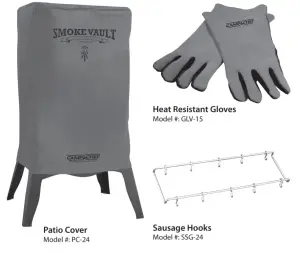

3985 N. 75 W., Hyde Park, UT 843181.800.650.2433www.campchef.com1211-SMV24S-BookletMade In China

References
[xyz-ips snippet=”download-snippet”]


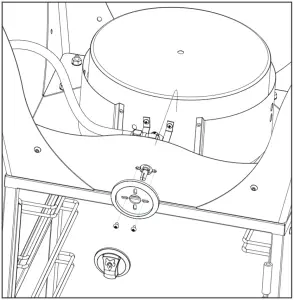
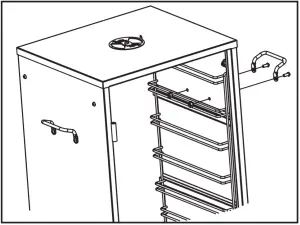
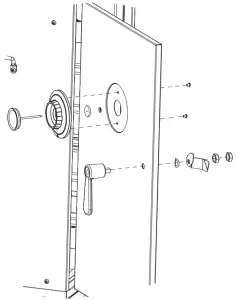
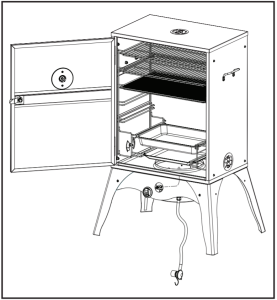
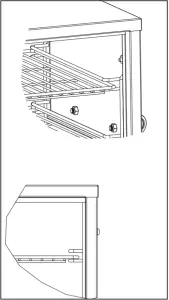


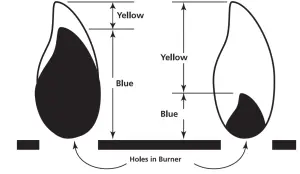 If the flame is accidentally extinguished, turn the appliance off and wait 5 minutes before attempting to ignite.
If the flame is accidentally extinguished, turn the appliance off and wait 5 minutes before attempting to ignite.